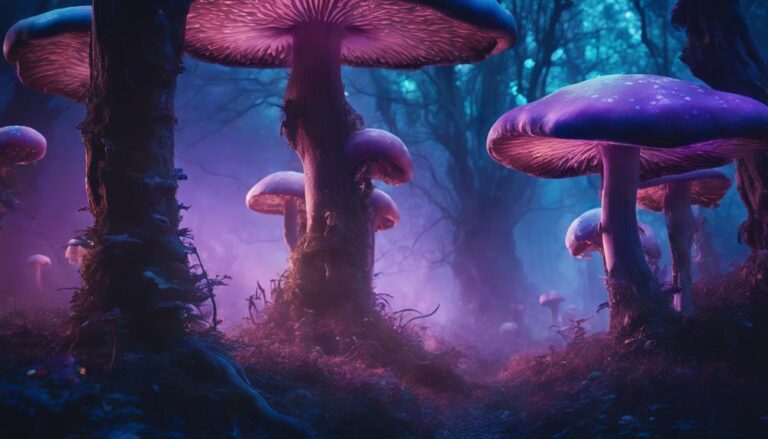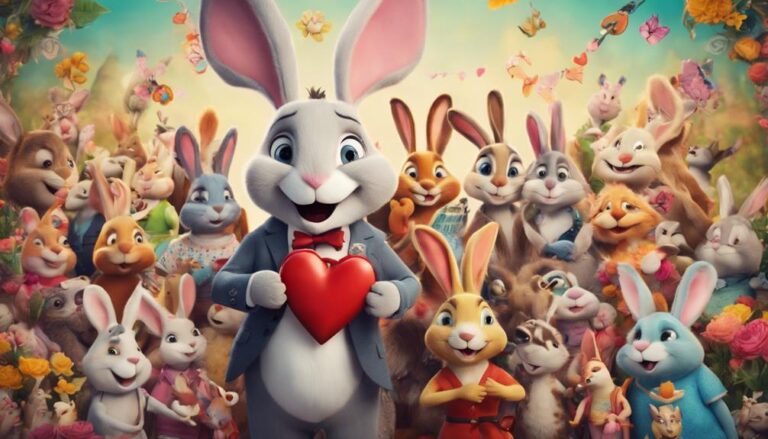Why Animation Scripts Need a Unique Format
When you write an animation script, you're crafting a visual blueprint that guides the entire team in bringing your story to life. A unique format is essential to balance action, dialogue, and visual descriptions, ensuring a richer experience. It also sets aside space for animator notes, provides clear action lines and concise scene descriptions, and allows for seamless collaboration across departments. By considering timing, pacing, and audio integration, you're giving your team the tools they need to capture the intended mood. As you continue to develop your script, you'll discover how a unique format can help elevate your entire production.
Key Takeaways
- Animation scripts require a unique format to balance action, dialogue, and visual description for a richer experience.
- This format facilitates collaboration among departments, such as storyboarding, design, and animation.
- A unique format ensures all departments work together seamlessly towards a common goal.
- It provides space for comments, references, and visual element descriptions, giving the team creative freedom.
- A customized layout allows for adjustments to font sizes, margins, and line spacing to cater to specific animation styles.
Unique Visual Storytelling Needs
When crafting animation scripts, you often find yourself juggling unique visual storytelling needs that don't apply to live-action scripts.
One key consideration is how to effectively integrate your storyboard into your script. This means including detailed descriptions of camera angles, character movements, and setting changes.
By weaving these visual elements into your narrative, you create a richer, more immersive experience for your audience.
Visual metaphors are another crucial aspect of animation scripts. These metaphors allow you to convey complex emotions and ideas in a way that feels both intuitive and impactful.
For example, a character's inner turmoil might be represented by a swirling storm cloud, while their growth and transformation could be symbolized by a blooming flower.
By incorporating these visual metaphors into your script, you add depth and nuance to your storytelling.
To achieve this, you'll need to think creatively about how to balance action, dialogue, and visual description in your script.
Timing and Pacing Considerations
Most animation scripts involve a delicate balance of timing and pacing to keep your audience engaged.
As you write your script, you're not just telling a story – you're also choreographing the rhythm of the animation. You need to consider how the beats of the action, dialogue, and music will come together to create a cohesive whole.
To achieve this, you'll need to think about the timing of each scene, shot, and action.
Here are some key considerations:
- Beat charts: Create a visual representation of the beats in your script to help you plan the pacing and timing of each scene.
- Frame counting: Consider the exact number of frames that will be used for each shot or action to ensure a smooth and seamless flow.
- Action timing: Plan out the timing of each action, including character movements, special effects, and camera movements.
- Dialogue pacing: Consider the rhythm and pacing of the dialogue to ensure it complements the action and music.
Space for Animator Notes
When formatting your animation script, you'll want to set aside dedicated space for comments and a reference section where animators can store notes.
This section serves as a centralized hub for feedback, suggestions, and clarification on specific scenes or sequences.
Space for Comments
In an animation script, a crucial section is dedicated to space for comments, also known as animator notes.
This section allows you to provide essential information to the animation team, giving them the creative freedom to bring your vision to life.
As you write your script, you'll realize that this space is vital for script evolution, as it enables you to make changes and adjustments without altering the core narrative.
When utilizing this space, consider the following:
- Visual descriptions: Use this space to elaborate on visual elements, such as character expressions, environmental details, and special effects.
- Tone and pacing: Provide notes on the desired tone and pacing of each scene, helping the animation team capture the intended mood.
- Character development: Offer insights into character motivations, backstory, and personality traits to ensure consistent character animation.
- Storybeat notes: Record any additional notes on the story, such as themes, symbolism, or underlying messages, to help the team stay aligned with your vision.
Animator's Reference Section
The Animator's Reference Section is a dedicated space within your animation script, essentially a blueprint for the animation team to reference as they bring your story to life.
This section should be concise, yet detailed, providing the animator with all the necessary information to accurately execute your vision. When creating this section, consider using a standardized template that includes essential elements such as character descriptions, prop lists, and location settings.
A well-organized Animator's Reference Section will save the animation team time and reduce potential errors.
Incorporate a storyboard template to visualize key scenes and shot sequences, and include an Animator's checklist to ensure all essential elements are captured. This checklist can include details such as camera angles, lighting requirements, and special effects.
Conveying Action and Movement
When conveying action and movement in your animation script, you'll focus on two key elements: describing character movement and visual action cues.
You'll need to clearly outline how characters enter and exit scenes, interact with each other, and move through the environment.
Describing Character Movement
Describing a character's movement effectively in an animation script requires more than just listing actions.
You need to convey the nuances of their physicality to bring the character to life. This means including details about their posture, facial expressions, and body language to create a believable performance.
When writing character movement, consider the following:
- *Weight and gravity*: How does the character's movement affect their surroundings? Do they move with a sense of weight or lightness?
- *Fluidity and rhythm*: Is the character's movement smooth and fluid, or stiff and awkward?
- *Emotional expression*: How does the character's movement convey their emotions? Do they move with confidence or hesitation?
- *Physicality details*: How does the character interact with their environment? Do they use props or interact with other characters in a specific way?
Visual Action Cues
To emphasize the action, use active verbs and vivid descriptions. For example, instead of saying "the character enters the room," say "the character bursts into the room, slamming the door behind her."
This gives the animation team a clear idea of the action and the energy behind it.
Action emphasis is also crucial in visual action cues. Use emphatic language to draw attention to important actions or movements.
For example, if a character is delivering a key punchline, you could write "the character's fist comes crashing down on the table, making everyone jump."
This helps the animation team focus on the key action and create a more impactful scene. By using clear and concise language, you can ensure that your visual action cues effectively convey the action and movement in your animation script.
Audio and Music Integration
Typically, animation scripts involve more than just dialogue and action lines – they also require careful consideration of audio and music integration.
As you work on your script, you'll need to think about how sound design and music beats can enhance the overall mood and atmosphere of your animation.
When it comes to audio and music integration, a unique script format is essential.
This is because you'll need to convey specific instructions to your sound team and composer about the type of audio and music you want to use.
Here are some key considerations to keep in mind:
Sound effects: What sounds will you use to bring your animation to life? For example, will you use sound effects to create a bustling city atmosphere or to emphasize the movement of your characters?
Music beats: How will you use music to set the tone and pace of your animation? For example, will you use fast-paced music to create a sense of urgency or slow, mournful music to create a sense of sadness?
Sound design: How will you use sound to create a sense of space and atmosphere in your animation? For example, will you use echoes to create a sense of distance or whispers to create a sense of intimacy?
Audio pacing: How will you use audio to control the pacing of your animation? For example, will you use quick cuts and fast-paced music to create a sense of energy or slow, deliberate cuts and music to create a sense of contemplation?
Collaboration Across Departments
As you delve into the world of animation scriptwriting, collaboration becomes the backbone of bringing your vision to life.
Effective collaboration requires tearing down department silos, where each team works in isolation, and embracing a cross-functional approach.
In animation production, departments such as storyboarding, design, layout, and animation need to work seamlessly together.
A unique format for animation scripts facilitates this collaboration.
It ensures that all departments are on the same page, working towards a common goal.
For instance, a script with clear action lines and concise scene descriptions helps the storyboarding team visualize the sequence of events.
This, in turn, enables the design team to create concept art that aligns with the story's tone and style.
Industry Standard Scripting Tools
Diving head-first into animation scriptwriting, you'll encounter a range of industry-standard scripting tools designed to streamline your workflow and enhance collaboration.
These tools offer a range of features that help you create, format, and share your scripts with ease.
When it comes to scripting your animation, you'll want to use software that offers flexibility and customization options.
Here are some key features to look for:
- Script templates: Many industry-standard tools come with pre-built script templates that cater to specific animation styles, such as feature films, TV series, or commercials.
- Customizable layouts: Look for software that allows you to adjust font sizes, margins, and line spacing to suit your needs.
- Real-time collaboration: Some tools offer real-time collaboration features that enable multiple team members to work on the same script simultaneously.
- Integration with other software: Choose a tool that integrates seamlessly with other software options in your pipeline, such as storyboarding or editing tools.
Frequently Asked Questions
Can Animation Scripts Be Used for Live-Action Films?
You can try using animation scripts for live-action films, but it's not ideal. Live action crossover requires more detailed action lines, and the script's focus on visual storytelling may not translate to practical filmmaking needs.
Are There Scriptwriting Jobs Specifically for Animation?
You explore career paths in animation scriptwriting, finding that industry demand fuels a range of jobs, from TV series writers to film screenwriters, and even freelance scriptwriters, offering diverse opportunities for you to thrive creatively.
Do Animators Need to Know Scripting Software?
You'll likely face software hurdles in animation, but knowing scripting software can give you an edge. Familiarize yourself with industry standards like Toon Boom Harmony or TVPaint Animation to stay competitive in the field.
Can I Use a Standard Playwriting Format for Animation?
You're considering using a standard playwriting format for animation, but script conventions and industry standards for animation differ significantly, requiring adaptations that a traditional playwriting format can't accommodate, so it's best to adjust.
Are Animation Scripts Shorter Than Regular Scripts?
You'll notice animation scripts are indeed shorter than regular scripts. Typically, they average 1-2 pages per minute of screen time, aligning with industry standards for pacing and visual storytelling.
Conclusion
You've crafted a script that's more than just words on a page – it's a blueprint for a visually stunning animation. By using a unique format, you've given your team the tools they need to bring your story to life. With precise timing, pacing, and action notes, your vision will unfold seamlessly on screen. As the animation takes shape, your script will have been the foundation that made it all possible.







